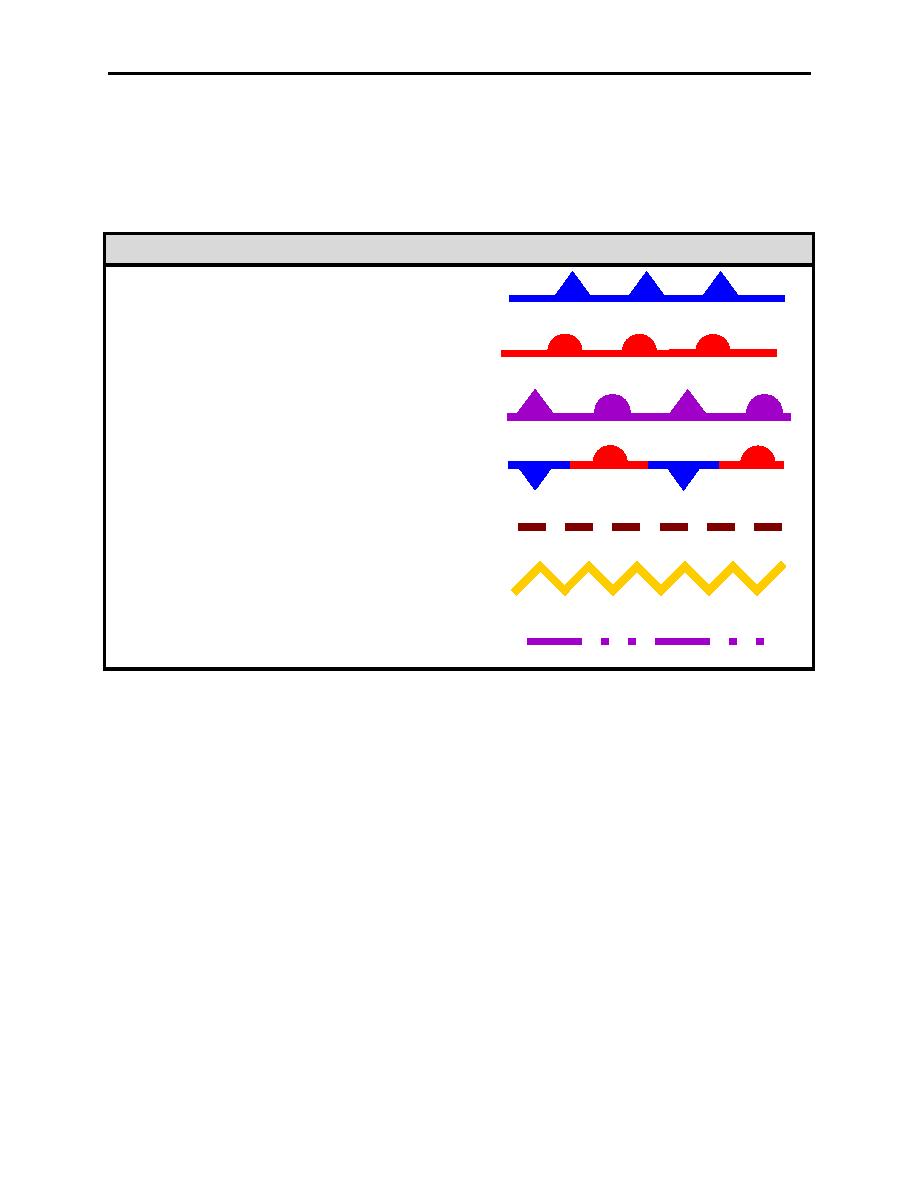 |
|||
|
|
|||
|
|
|||
| ||||||||||
|
|  CHAPTER THREE
AVIATION WEATHER
them can be hundreds of miles long. Air masses and fronts are three-dimensional. The point
where a front comes in contact with the ground is called the surface front.
The surface front is the line plotted on surface analysis charts with different colors and shapes
representing each type of front, as pictured in Figure 3-4.
Type of Front
Color Scheme
SYMBOL
Cold front
Blue
Warm front
Red
Occluded front
Purple
Stationary front
Blue and Red
Trough
Brown or Black
Ridge
Yellow or Black
Squall line
Purple
Figure 3-4 Frontal Symbols
The frontal zone is the area encompasses the weather located on either side of the front. The
depth of this frontal zone depends on the properties of the two air masses. When the properties
differ greatly, the resulting narrow frontal zone can include sudden and severe weather changes.
It is often impossible to determine the exact outer boundaries of a frontal zone. Most active
weather is focused along and on either side of the surface front and frontal zone. Likewise, most
aviation weather hazards are also found in the vicinity of fronts. In the mid-latitudes, fronts
usually form between the warmer, tropical air to the south and the cooler, polar air to the north.
When a pilot passes through a front or a front moves past a station, the atmospheric conditions
change from one air mass to those of the other. Abrupt changes indicate the frontal zone is
narrow and in some cases, the zone can be less than a mile wide. On the other hand, gradual
changes indicate the frontal zone is broad and diffuse, often over 200 miles in width. Abrupt
changes will bring more severe weather than gradual changes.
Aviation weather hazards are not limited to the area of frontal zones. Some fronts do not
produce clouds or precipitation. Additionally, weather associated with one section of a front is
frequently different from the weather in other sections of the same front. Do not conclude all
3-4
Mechanics of Frontal Systems
|
|
Privacy Statement - Press Release - Copyright Information. - Contact Us |